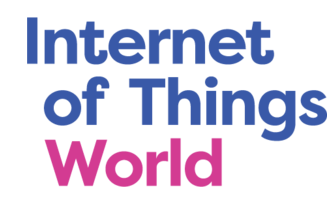IoT & Embedded Technology Blog
At IoT World, the Edge Comes to the Center
In the early days of the IoT, many industry participants had assumed that nearly all IoT device data and sensor data would be sent to the cloud for storage and analytics. As large scale implementations began to run, the sheer volume of raw data generated by IoT systems made it apparent that significant portions of data needed to be filtered and/or pre-processed to reduce the volume of data sent to the cloud, as well as latencies that might occur in sending and processing data in the cloud. Thus the concept of IoT edge computing was born.
 Not everyone agrees on the definition of “the edge,” but VDC considers it to consist of distributed computing in IoT devices (endpoints), as well as any other processing systems (such as intelligent gateways) that precede connectivity to a cloud or on-premises datacenter. In many current IoT installations, the endpoints lack sufficient processing power or other embedded resources to serve data processing functions, and “edge” tasks are left to gateways, industrial programmable logic controllers (PLCs), edge servers, and similar intermediate systems.
Not everyone agrees on the definition of “the edge,” but VDC considers it to consist of distributed computing in IoT devices (endpoints), as well as any other processing systems (such as intelligent gateways) that precede connectivity to a cloud or on-premises datacenter. In many current IoT installations, the endpoints lack sufficient processing power or other embedded resources to serve data processing functions, and “edge” tasks are left to gateways, industrial programmable logic controllers (PLCs), edge servers, and similar intermediate systems.
At this year’s IoT World conference and trade show in Santa Clara, CA, the topic of the edge was front and center, and found its way into nearly every conversation we had. Numerous edge solutions were on display or up for discussion, even from companies that have vested interests in transmitting data to the cloud (e.g. Ericsson, Verizon) or storing and processing data in the cloud (e.g. Amazon, Google, Microsoft).
A few examples from the trade show floor:
- Samsung’s Artik group demonstrating smart home appliances featuring Axon Predict edge analytics from Greenwave Systems
- ClearBlade showcasing its distributed computing tests underway in smart buildings and in railroad crossing management
- Striim (pronounced “stream”) with an edge server version of its streaming analytics software
- Foghorn Systems’ Lightning edge analytics and machine learning for industrial IoT systems
- Rigado’s Cascade “edge-as-a-service,” including gateway hardware, software tools, and managed services for $9 a month
- SAP’s addition of Edge Services to its Asset Intelligence Network
- And an entire track of 10 conference sessions on Edge Computing.
Of course there’s a risk that the pendulum will swing too far to the edge, encompassing some computing that would be better served in the cloud. (As the saying goes, “To a man with a new hammer, everything looks like a nail.”) However, faster communications via 5G wireless and the proliferation of direct-to-wide-area-network via LPWANs may offset such tendencies. Plus, potential new intermediate computing platforms, such as IoT data processing in cellular base stations, may further blur the definition of the edge, as if it wasn’t already fuzzy enough.
View the 2018 IoT & Embedded Technology Research Outline to learn more.